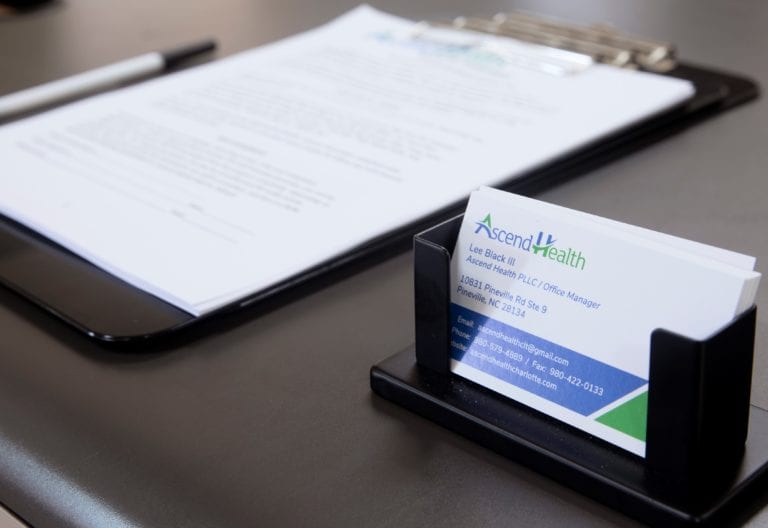Understanding sublocade treatment
Sublocade treatment with insurance coverage offers a streamlined path to long-term relapse prevention using a monthly buprenorphine injection. As a form of medication-assisted treatment, Sublocade delivers controlled levels of buprenorphine over four weeks, reducing cravings and withdrawal symptoms. In a clinical study, 28% of patients receiving Sublocade plus counseling achieved treatment success versus just 2% on placebo plus counseling [1]. With over 350,000 people prescribed this extended-release therapy since 2018, you can feel confident that this option has been embraced by patients and providers alike.
How sublocade works
- Sublocade is an extended-release form of buprenorphine that binds to mu receptors in the brain, blocking the effects of other opioids
- The first injection starts working immediately, managing cravings and easing withdrawal
- Subsequent monthly doses maintain a stable buprenorphine level, helping prevent relapse
Clinical effectiveness
- 28% success rate with counseling support versus 2% with placebo [1]
- Shown to reduce treatment dropout and improve retention in opioid use disorder care [2]
- Same-day start option available even if you haven’t taken buprenorphine before
Overall, Sublocade provides a discreet, once-monthly approach to opioid recovery that can fit seamlessly into your aftercare routine.
Exploring insurance coverage
Navigating insurance coverage for long-acting injectable therapy can feel daunting. Fortunately, most commercial, Medicaid, and Medicare plans cover Sublocade to some extent, reducing your out-of-pocket burden.
Types of insurance plans
- Commercial (private) insurance
- 88% of insured patients have coverage for Sublocade [3]
- Copay assistance program available to bring your medication cost to $0 for 95% of enrollees
- Medicaid
- Generally covers Sublocade in state plans (for example, TennCare in Tennessee and Cardinal Care in Virginia)
- Out-of-pocket costs typically range from $1 to $4 per month [4]
- Medicare
- Coverage varies by plan, with out-of-pocket costs between $0.02 and $1,607 per dose
- Average monthly expense around $97 before supplemental insurance
Coverage trends and statistics
- More than 88% of individuals with insurance have some form of Sublocade in-network benefits
- Private insurance patients enrolled in the Copay Assistance Program pay $0 for medication 95% of the time
- Government insurance holders (Medicare, Medicaid, VA) are not eligible for commercial copay assistance [5]
By understanding your plan’s specifics, you can optimize your benefits and minimize surprises at the pharmacy.
Assessing copay assistance options
If you have private insurance, the INSUPPORT Copay Assistance Program can dramatically lower your monthly medication expense.
INSUPPORT copay assistance program
- Covers out-of-pocket costs for SUBLOCADE for patients with private commercial insurance on-label
- 95% of enrolled participants pay $0 for the medication portion of their treatment [3]
Eligibility criteria
- Must have private insurance (Medicare, Medicaid, VA or other government plans are not eligible)
- Prescription for Sublocade must be on-label for opioid use disorder
Enrollment process
- Complete the Patient Enrollment Form with your healthcare provider
- Submit the form online or via fax to INSUPPORT
- Receive a benefits summary letter outlining your coverage and assistance amount [5]
As a result, you can focus on recovery without worrying about high medication bills, reinforcing the tailored treatment approach you deserve.
Navigating enrollment requirements
Getting started with Sublocade and copay assistance involves working closely with your provider and the INSUPPORT team.
Working with your healthcare provider
- Discuss Sublocade as part of your medication-assisted treatment plan, especially if you’ve completed detox or an inpatient stay
- Coordinate on completing the patient enrollment sections of the INSUPPORT form
Completing patient forms
- Provide accurate insurance information to enable a full benefit investigation
- Sign and date all required sections before submission
- Keep copies of fax confirmations or online receipt emails
Once INSUPPORT verifies your coverage, you’ll receive a summary letter outlining copay discounts and any remaining patient responsibility. This streamlined process ensures you have a supportive environment as you transition to outpatient care.
Integrating into aftercare continuum
Monthly injectable therapy can become the cornerstone of your aftercare and relapse prevention plan, especially when combined with evidence-based counseling and peer support.
Medication-assisted treatment programs
- Sublocade can be paired with ongoing suboxone maintenance therapy outpatient program or outpatient buprenorphine treatment program for a comprehensive approach
- You may transition to or from a telehealth suboxone maintenance program if flexibility is key
Relapse prevention therapy
- Participation in relapse prevention mat treatment and mat aftercare and relapse prevention strengthens coping skills
- Group and individual counseling address triggers and reinforce the support necessary for lasting recovery
By combining extended-release medication with tailored treatment programs, you build a robust aftercare continuum that addresses both biological and behavioral aspects of opioid use disorder.
Comparing payment scenarios
Evaluating potential costs can help you plan financially and avoid unexpected expenses.
| Insurance type | List price (per month) | Out-of-pocket cost range | Copay assistance |
|---|---|---|---|
| Commercial (private) | $2,117.34 | $0.01–$1,822 (avg $243) | Eligible (95% pay $0) [Sublocade] |
| Medicaid | $2,117.34 | $1–$4 | Not eligible |
| Medicare | $2,117.34 | $0.02–$1,607 (avg $97) | Not eligible |
| Uninsured | $2,117.34 | Full list price | Not eligible |
Key takeaways:
- If you have private insurance, enrolling in the Copay Assistance Program can eliminate your medication bill
- Medicaid plans offer minimal copays but no additional assistance
- Uninsured individuals face the full list price unless alternative programs or grants are available
Understanding these scenarios empowers you to make informed decisions and advocate effectively with your insurance provider.
Choosing outpatient recovery program
Selecting the right outpatient continuum is crucial for maintaining progress after inpatient care or detox.
Ascend Health’s continuum
At Ascend Health, we offer a seamless transition from residential treatment to outpatient care. Our aftercare services emphasize a supportive environment where medication, therapy, and peer support come together in an individualized plan.
Program options
- In-person and telehealth outpatient opioid rehab with suboxone
- Telehealth opioid treatment with suboxone for remote access
- Outpatient opioid program that takes medicaid and other insurance plans
- Specialized tracks such as dual diagnosis mat program and veteran opioid treatment program
- Family-focused care through outpatient mat with family therapy
- Long-term support in a suboxone clinic for long-term recovery
Additionally, you may find options for buprenorphine maintenance covered by insurance and affordable suboxone treatment for addiction. Each pathway reinforces comprehensive care and individualized plans.
Taking next recovery steps
Navigating Sublocade treatment with insurance coverage can feel complex, but you don’t have to do it alone. By:
- Reviewing your insurance plan details and eligibility
- Enrolling in copay assistance if you have private coverage
- Working with your provider on enrollment paperwork
- Integrating Sublocade into a tailored aftercare strategy
- Choosing an outpatient program that aligns with your needs
you can unlock access to a reliable, once-monthly injectable therapy that supports your recovery journey. Contact Ascend Health today to explore how our insurance-covered outpatient recovery program can help you maintain momentum and achieve lasting sobriety.



